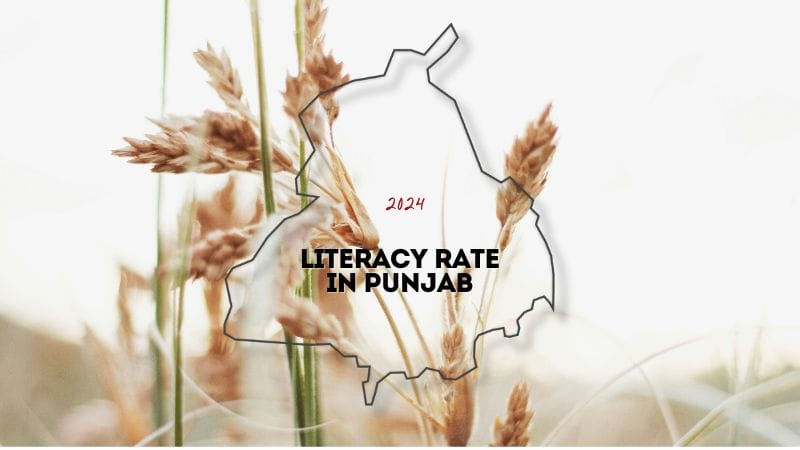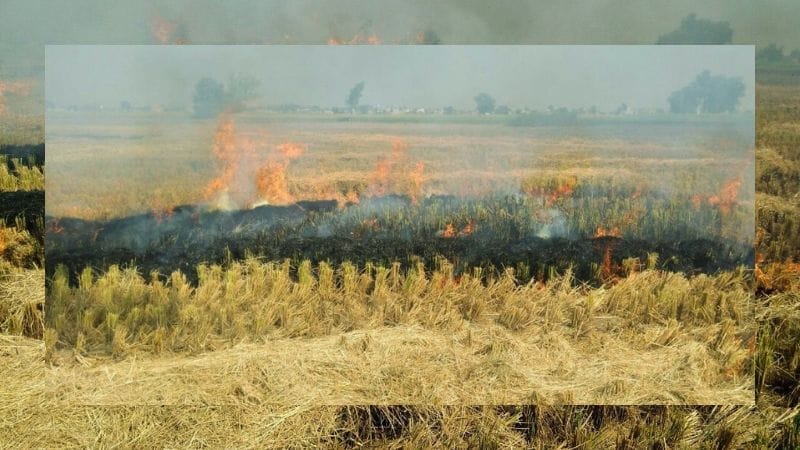Punjab Farm Fires Cases Cross 4,000, Spark Environmental Concerns
Punjab, India – November 3, 2023: In a concerning development, Punjab has recorded over 4,000 farm fire incidents this crop season, with the Punjab Remote Sensing Centre (PRSC) reporting a total of 4,132 cases of active fire events between September 15 and November 3.
The recent surge in stubble-burning activities has raised alarm among environmentalists, policymakers, and citizens, as smoke from these fires is a key contributor to the air quality decline in northern India, particularly affecting cities like Delhi.
On Sunday alone, Punjab recorded 216 new farm fire cases, marking a continued rise in incidents. The previous week saw a spike in fire cases, with numbers reaching 1,779 over the last five days.
The stubble-burning events peaked with 587 cases reported on November 1, while October 31 recorded 484 cases, and November 2 reported 379 incidents. These increasing numbers have brought stubble burning back to the forefront of the air pollution debate in the region.
Daily Farm Fire Incidents in Punjab – A Growing Trend
The PRSC data reveals a sharp escalation in farm fire incidents, with multiple days witnessing high counts of fresh cases:
- October 29: 219 incidents
- October 30: 110 incidents
- October 31: 484 incidents
- November 1: 587 incidents
- November 2: 379 incidents
- November 3: 216 incidents
Among the 216 cases reported on November 3, Sangrur district led with 59 incidents, followed by Ferozepur (26), Moga and Mansa (19 each), and Tarn Taran (18). These districts are known for high agricultural output, particularly paddy, which produces significant crop residue, thus making them hotspots for stubble burning.
Why Are Farmers Burning Stubble?
The practice of stubble burning has long been a post-harvest tradition in Punjab and neighboring Haryana. Farmers clear their fields by setting fire to the remaining paddy straw, enabling them to prepare for the next sowing season swiftly.
This process is especially crucial for the Rabi crop season, where wheat sowing needs to be completed shortly after the paddy harvest. Due to this short window, many farmers find it impractical to manage crop residue manually, choosing instead to burn the stubble, which offers a quicker and cost-effective solution.
However, stubble burning has proven to have dire environmental consequences. The smoke generated contributes significantly to air pollution, releasing particulate matter (PM2.5 and PM10) and other pollutants that compromise air quality across the northern Indian plains.
This seasonal practice has been a persistent challenge, despite government efforts to curb it through subsidies on equipment like Happy Seeders and other crop residue management tools.
Air Quality in Delhi and Northern India Under Pressure
As the number of farm fires in Punjab escalates, the impact on air quality in Delhi and neighboring areas becomes increasingly evident. Each year, pollutants from Punjab’s stubble burning drift towards Delhi due to favorable wind patterns, adding to the existing pollution from vehicular emissions, construction dust, and industrial output.
The month of November has consistently recorded some of the poorest air quality indices (AQI) in Delhi, and experts suggest that this season might be no different unless stringent actions are taken to curb stubble burning. The AQI in Delhi often reaches hazardous levels during this period, sparking health advisories and restrictions to protect vulnerable populations, including children and the elderly.
Government Response and Efforts to Curb Stubble Burning
In recent years, the central and state governments have implemented various initiatives to reduce stubble burning incidents. Financial incentives have been offered to farmers who adopt sustainable crop residue management techniques, such as using Happy Seeders, which plant seeds without the need to clear fields.
Additionally, subsidies are provided for machines that can convert crop residue into organic manure or biogas, potentially creating an income source for farmers.
Despite these efforts, however, the adoption rate of these alternatives has been relatively low. According to agricultural experts, factors like the high cost of machinery, lack of awareness, and resistance to change among farmers contribute to the ongoing prevalence of stubble burning.
In 2023, Punjab reported a 26% reduction in total farm fire incidents compared to the previous year, recording 36,663 cases. This is a notable improvement from 49,922 cases in 2022, but the numbers are still alarmingly high, particularly as the seasonal trend shows continued spikes during the paddy harvest period.
The previous years’ records indicate a declining trend from 76,590 cases in 2020 and 71,304 in 2021, suggesting a gradual reduction, though the current figures highlight that more intensive action may still be needed.
Regional Variations in Stubble Burning Incidents
Stubble burning in Punjab is not uniformly distributed, with certain districts consistently reporting higher incidents. This season, Sangrur district has emerged as the leader in farm fire cases, a trend observed in previous years as well.
High agricultural productivity, coupled with limited awareness and fewer resources for sustainable residue management, makes such districts prone to higher stubble-burning activity.
The Path Forward – Balancing Agriculture with Environmental Responsibility
Addressing the issue of stubble burning requires a multi-pronged approach that encompasses policy reform, technological support, and awareness campaigns. Key areas that need immediate focus include:
- Strengthening Subsidies and Incentives: Increasing the affordability of crop residue management equipment could encourage farmers to transition away from burning.
- Education and Awareness Programs: Informing farmers about the long-term health and environmental effects of stubble burning and alternative practices is essential.
- Research and Development of Cost-Effective Solutions: Investing in R&D for affordable, efficient crop residue management solutions that cater specifically to small and marginal farmers.
- Enhancing Penalties for Stubble Burning: Stricter penalties, alongside rewards for sustainable practices, could provide the necessary motivation for change.
- Crop Diversification Initiatives: Encouraging farmers to adopt crop cycles that naturally produce less residue or are easier to manage can reduce the need for stubble burning.
An Urgent Call for Sustainable Practices
The recent surge in farm fire incidents across Punjab underscores the persistent challenges in balancing agricultural practices with environmental health. As stubble burning contributes heavily to air pollution, the repercussions extend far beyond Punjab, impacting millions across northern India.
The state and central governments, alongside agricultural bodies and environmental organizations, must act cohesively to find sustainable solutions that allow farmers to meet their needs without compromising the region’s air quality.
Until robust measures are adopted on a large scale, stubble burning will likely remain a seasonal contributor to pollution in northern India. As winter approaches, reducing stubble-burning incidents becomes even more critical to protecting the health and well-being of the public.
Stay connected with NH Punjab on social media. Follow us on Facebook, Twitter/X, and Instagram for the latest news updates, behind-the-scenes content, and more. Engage with us online and be a part of our growing community.

Punjab and Haryana Intensify Efforts to Curb Straw Burning, Aiming to Improve NCR Air Quality
State Support for Farmers in Punjab and Haryana to Curb Straw Burning and Reduce Air Pollution Farmers in Punjab and Haryana are receiving significant state support to curb the practice of straw burning, which is known to severely deteriorate air quality in the National Capital Region (NCR) and surrounding areas. Every year, the burning of …
Stay connected with NH PUNJAB, where your news journey begins.

Literacy Rate in Punjab 2024, Current Statistics, Government Initiatives, and Future Prospects
Literacy Rate in Punjab 2024 As of 2024, the literacy rate in Punjab reflects significant progress in educational development, with a focus on bridging gaps in gender and rural-urban disparities. The state’s government has been actively implementing educational policies aimed at increasing literacy rates, improving infrastructure, and providing quality education to all. In this article, …

